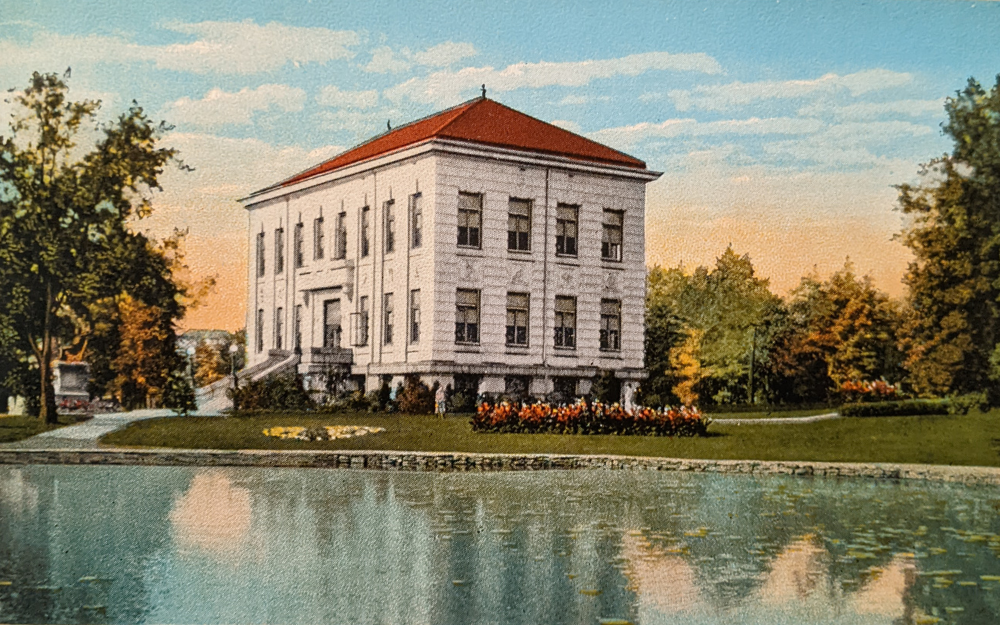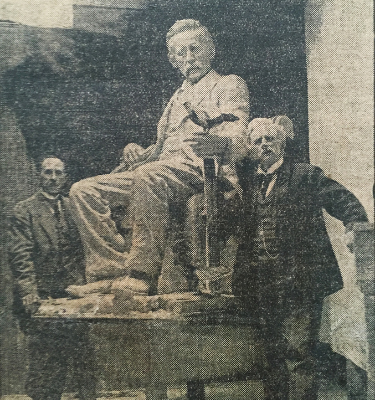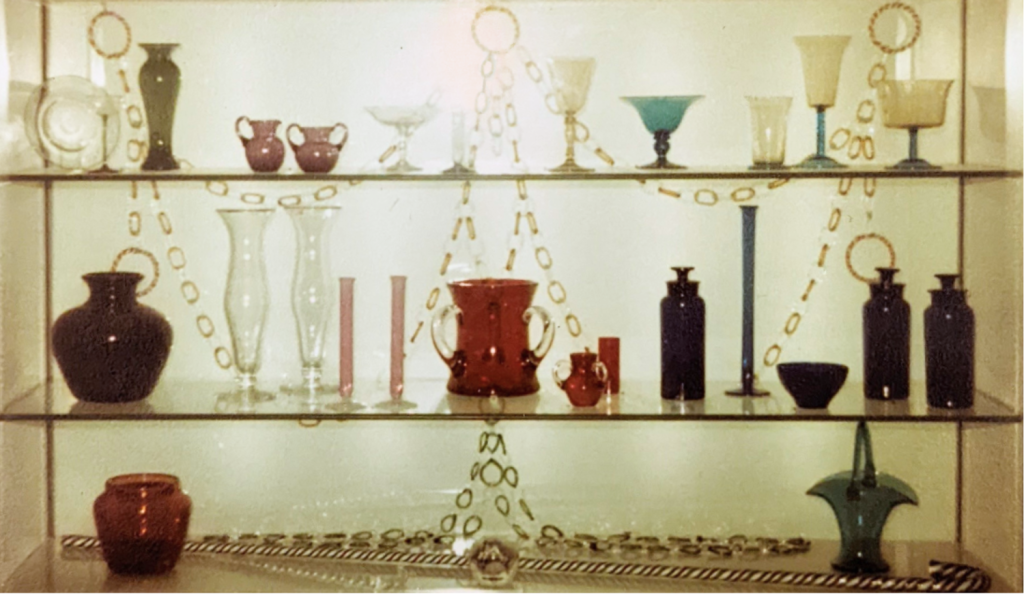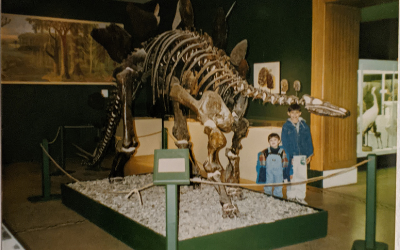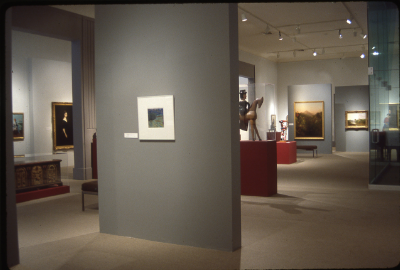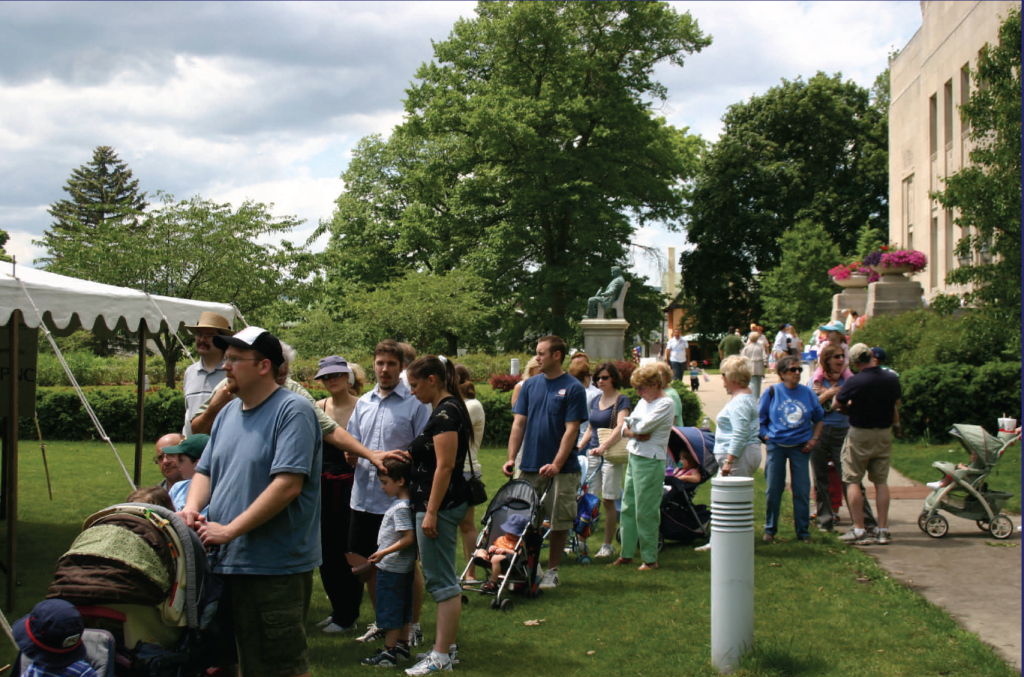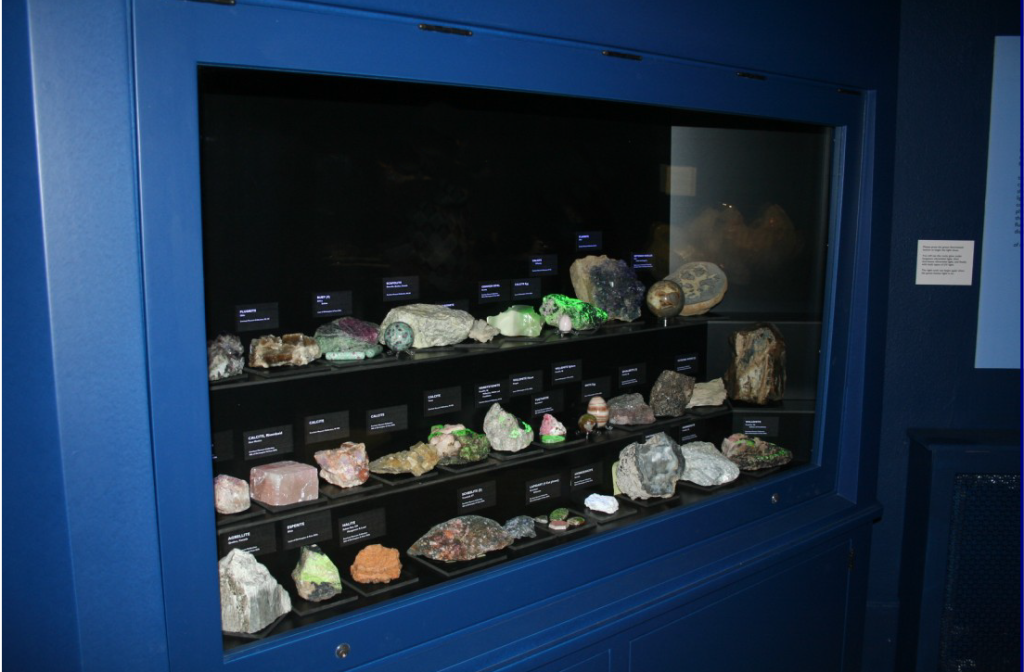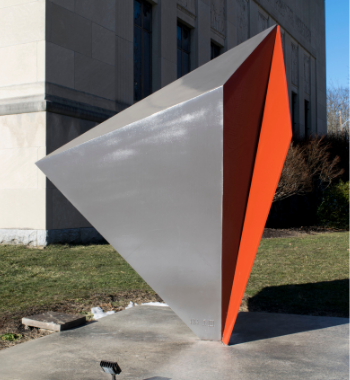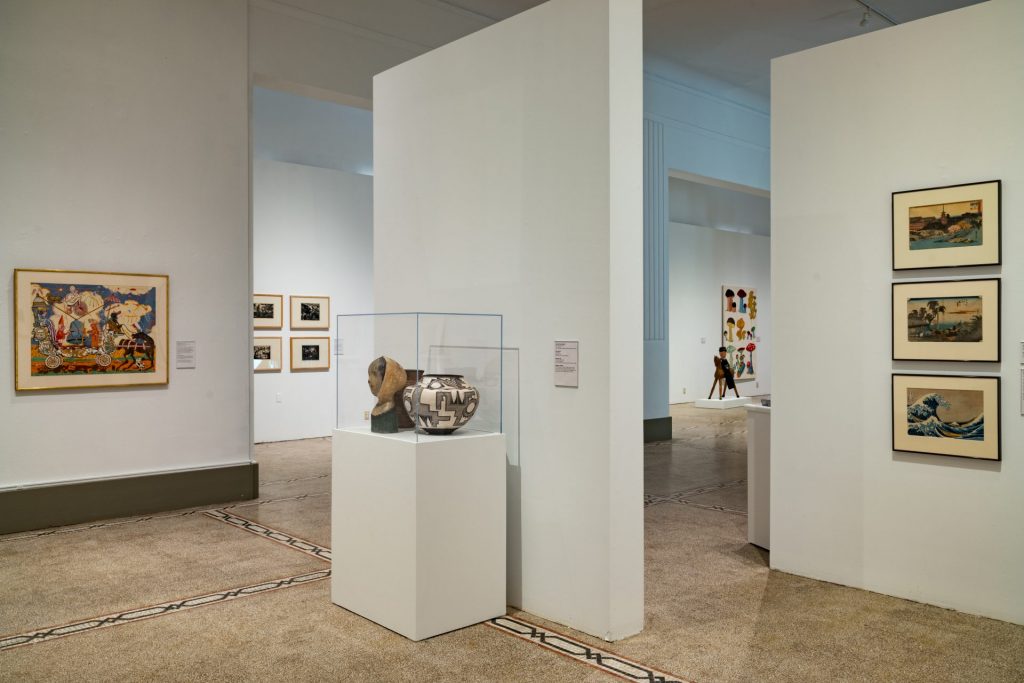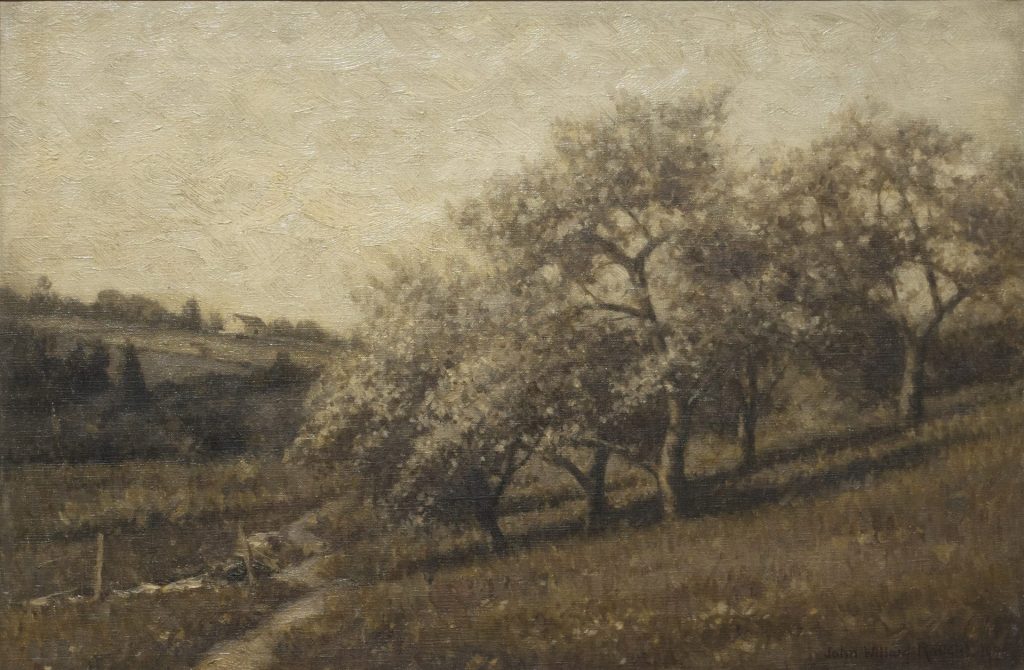History of the Everhart Museum
Since first opening its doors to the public in 1908, the Museum has continued to fulfill founder Dr. Isaiah Everhart’s vision of enlightening Northeastern Pennsylvania through natural history, science, and art.
1900s
In 1905, Dr. Isaiah F. Everhart (1840–1911), a Civil War medic, Scranton physician, and amateur ornithologist drafted a will specifying that funds from his estate should be used to construct the “Dr. I.F. Everhart general museum to be built in Nay Aug Park in the City of Scranton, Pennsylvania.”
Plans were made by Scranton architects Harvey J. Blackwood and John Nelson in the Beaux Arts style, first popularized at the World’s Columbian Exposition of 1893 in Chicago. Strategically located at the entrance to Scranton’s Nay Aug Park, the Everhart would stand as a visible expression of the “City Beautiful” movement, which emerged nationally in the 1890s as a response to the squalid conditions of America’s urban environments.
In 1908, construction was completed on the original structure, which was much smaller than the current structure. On May 30, 1908, the Everhart Museum opened its doors, becoming the ninth museum in the Commonwealth of Pennsylvania. It was Dr. Everhart’s own assemblage of taxidermied birds as well as other mounted animals and natural history specimens that formed the foundation of the Museum’s original collection, as Dr. Everhart intended the Museum as a way of sharing these items with the community.
From the beginning, plans for the Museum called for an expansion, which according to Dr. Everhart’s wishes would encompass “three buildings forming three sides of a square, one for natural history, one for science, one for art.” These plans would be drastically altered and take decades to come to fruition.
1910s
On May 26, 1911, Dr. Everhart passed away. On May 30, 1911, just five days after his death, a statue of his likeness, donated by Dr. Everhart’s friend and fellow naturalist Dr. B. H. Warren (1858-1926) and completed in 1910, was dedicated as a memorial to Dr. Everhart on the front lawn of the Museum. The sculpture features the likeness of Dr. Everhart seated with a bird in his left hand and a book marked “Audubon” in his right, commemorating his love of ornithology.
Following the founder’s death, it fell to other individuals to see his vision through. During the 1910s, the Museum’s first director and curator R.N. Davis (1858-1934) expanded the collections in line with Dr. Everhart’s vision. The ethnographic collections were started with the addition of Native American artifacts in 1912. A substantial addition to the natural history collections was made when Alfred Twining, the Associate Editor of the Scranton Times and foremost botanist in the region, donated his Herbarium to the Museum in 1913. The Herbarium is housed in twin eight foot cabinets and contains over 1,500 specimens of plant life native to the Commonwealth of Pennsylvania. And in 1917, the acquisition of Sturgis Japanese Art Collection bolstered the fledgling art collection.
1920s
By 1920, the Museum’s natural history collections numbered more than 2,300 bird specimens, 50 fish, 400 mammals, 150 reptiles, 35 amphibians, 2,100 botanical specimens, 25,000 shells, 300 fossils and 800 minerals. In 1921, a sizable addition to the natural history collections was made as R.N. Davis, both director and curator at the time, led Everhart staff on an expedition to Panama to retrieve specimens for the Museum’s Collection. As for the art collections, a large selection of plaster casts of classical sculpture donated by Mrs. Benjamin Dimmick were among notable acquisitions.
In 1920, the Museum also became the location of Lackawanna Historical Society for collections and operations. It would remain so for many years before the LHS settled permanently into the nearby Catlin House, former residence of financier George H. Catlin, in 1942.
The most significant development for the Museum in the 1920s was the long-awaited expansion of the structure itself into its current state. Instead of adding two separate buildings for science and art as originally called for, the Everhart Museum Trustees decided to add two wings to the original building in accordance with designs by the Scranton architects David H. Morgan and Searle von Storch. The wings, one to the east and one to the west of the original rectangle, formed an “E” standing for “Everhart,” which can be seen in aerial views of the building.
Additionally, the entire facade underwent an overhaul. The original Beaux Arts facade was wrapped in a stripped classical facade in the Art Deco fashion that was popular at the time. The finished building was dedicated on November 11, 1929, three weeks after the Great Market Crash The additional square footage in the now 15 gallery spaces facilitated a quickened pace for collecting, especially as it pertained to art.
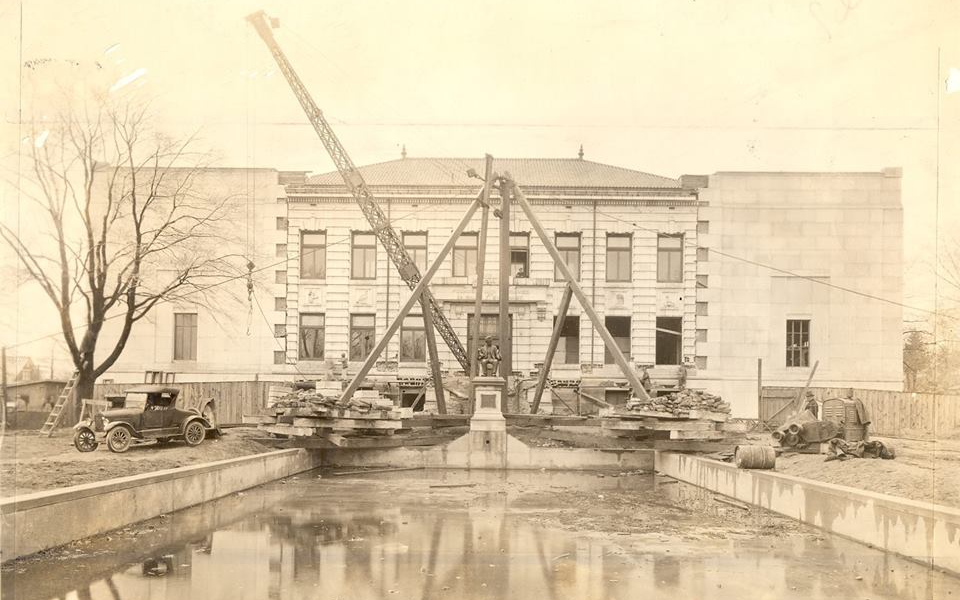
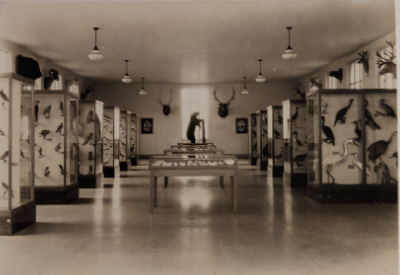
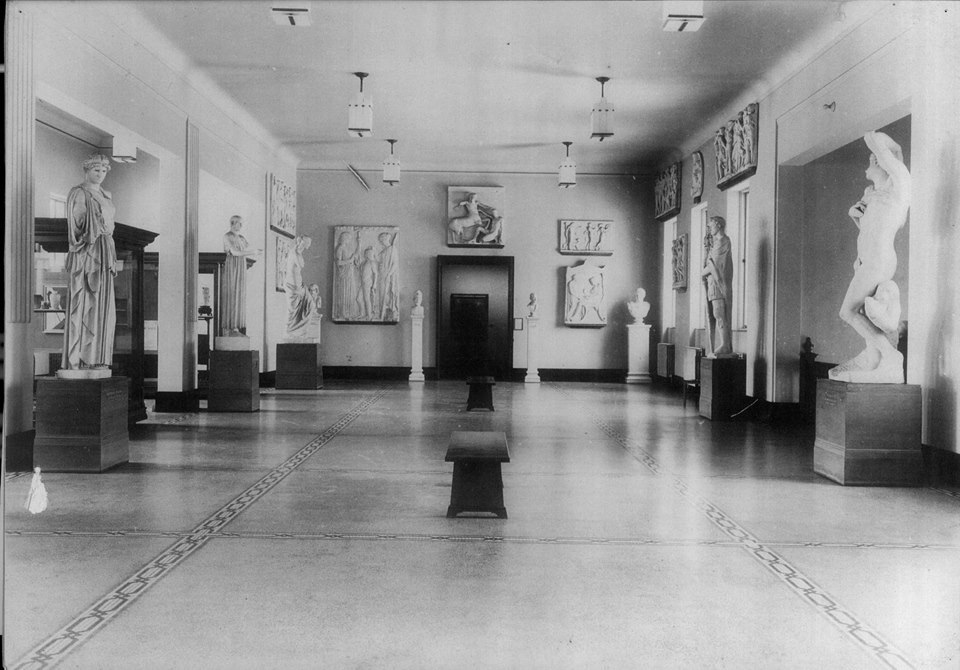
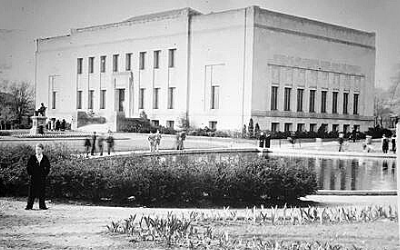
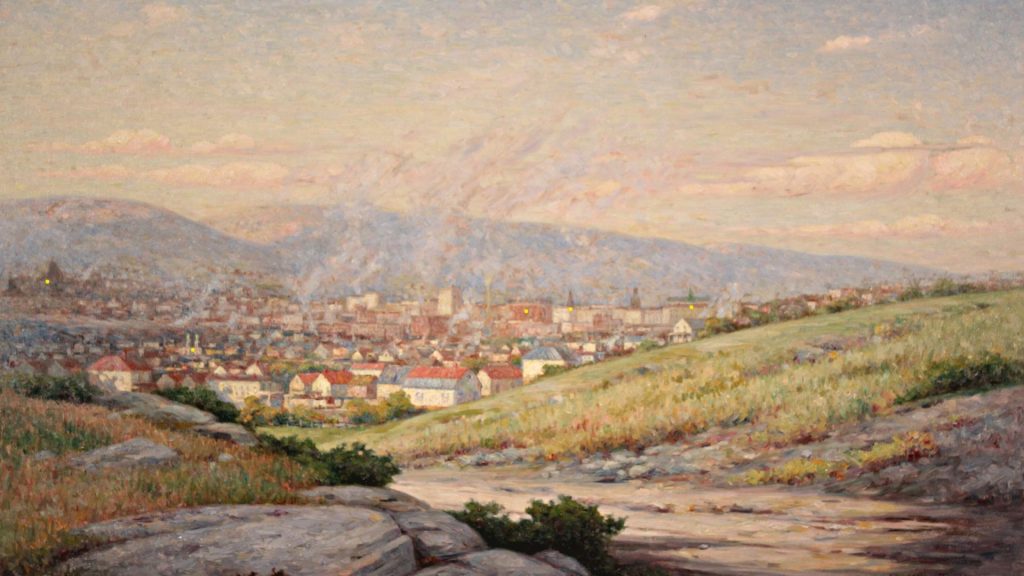
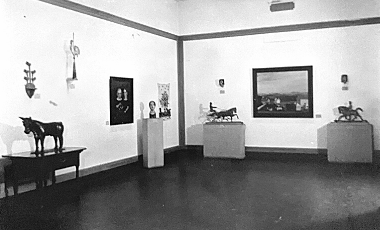
Collection, ca. 1934–1940s
1930s and 1940s
The 1930s and 1940s saw a rapid expansion of art and ethnographic collections. The Native American collection grew exponentially on a large donation of artifacts from Colonel Watres. And significant pieces of American folk art, African art, and Oceanic art that had been lent by John Law Robertson and his wife Rhetta Church Robertson for a special exhibition in 1934 were ultimately donated to the Museum by Mrs. Isabel R. Scott, daughter of the Robertsons, in the years of 1946 to 1948. The Robertson gift established the Museum’s now-expansive folk art collection. The Robertsons were foremost proponents and collectors of American folk art, or art created by artists without formal training, at a time before the genre was seriously regarded by the American art community at large.
The chief driving force for the expansion of the art collections throughout the 1930s and 1940s was Everhart Museum Executive Director Elizabeth Taylor. Much of this art was collected from prominent regional artists. In 1931, the John Willard Raught Memorial was established to honor the memory of the then-recently deceased Impressionist painter and Dunmore native. Friends and family members of Raught donated many oil paintings by the artist, thus establishing what grew to become the largest public collection of his work. Raught’s primary focus was Impressionist paintings of Northeastern Pennsylvania’s natural and industrial landscapes, including iconic depictions of the region’s coal landscapes that served as progressive environmental statements. His opus, Scranton, Looking North, stands as his hallmark work and a testament to artistic ability.
In the 1940s, the Museum established a collection of work by Priscilla Longshore Garrett, another artist working in Pennsylvania. Garrett specialized in highly-stylized landscapes and portraits.
1950s and 1960s
The most significant influx of new artwork to the Museum in the 1950s and 1960s was donated by Julius Carlebach, a New York City art dealer who became personally invested in the Museum’s growth. Among his donations were artworks from North Africa, the Mediterranean, and South America.
A 1963 exhibition of paintings and sculptures by Scranton native Hope Horn (1920–2001) at the Everhart Museum was the impetus for strong, long-lasting ties between the artist and the institution. Skilled in many disciplines, Horn took particular interest in egg tempera paintings of everyday objects and bronze busts. Following the 1963 exhibition, which took place in the new Downstairs Gallery constructed in 1962 to accommodate regularly-changing exhibitions, the Museum began its own collection of her works through both gifts and purchases. Horn instructed at a multitude of regional colleges and art institutions, including for many years at the Everhart Museum, all while steadily producing her artwork and establishing the Hope Horn Studio. Over the years, the Museum has amassed one of the largest public collections of Horn’s work, and it grows to this day.
The 1960s was also the decade that the Everhart became involved with Dorflinger Glass, which was first produced in Brooklyn, NY by Christian Dorflinger in 1853 and was later made in White Mills, PA at C. Dorflinger & Sons from 1881 to 1921. In 1960, the first exhibition of Dorflinger Glass at the Everhart took place, showcasing objects on loan from descendent John Dorflinger, including wares created for the Lincoln White House in 1861. And in 1969, with the support of the Museum Association of Scranton, the Museum began acquiring its own hallmark collection of Dorflinger Glass. The Dorflinger Gallery would be instituted in 1973 to display a rapidly growing collection of gifts and purchases, and it occupies the same space to this day.
1970s and 1980s
In the 1970s and 1980s, the Museum focused on collecting both artwork from regional artists, much of which showcased the Northeastern Pennsylvania landscape, and contemporary artwork from national artists. Among regional artworks acquired at this time were those by Philadelphia-born, Scranton-based painter Frederic C. Knight (1898–1979). In the years following Knight’s death in 1979, Mrs. Frederic C. Knight donated a substantial set of his paintings to establish a collection. The artist specialized in American Realist portraits, still lifes, and landscapes, particularly industrial landscapes depicting regional scenes.
In 1979, the Museum began collecting works by Wilkes-Barre, PA native Jon Carsman (1944–1987), whose distinctive silkscreens, acrylic, pen, and watercolor works. Much of his art was inspired by the natural landscape and architecture of Northeastern Pennsylvania, encapsulated in vivid work often described as “super-realism” or “new realism.” Having hosted Carsman’s first solo exhibition in 1968, the Museum would amass a sizable collection of the artist’s work over the decades.
In the 1980s, the Museum acquired a plethora of artworks and ethnographic objects from Papua New Guinea, adding to the Oceanic collection established by the Robertson gifts in the 1940s.
Around this time, the entire upper floor of the Museum was renovated to better accommodate the permanent galleries and to create a suite of temporary exhibition spaces. Additionally, vital improvements were made to the building’s climate control systems, and an elevator was added to make the Museum accessible for all.
1990s
In 1991, a major addition was made to the natural history collection when Michael Roth donated a fully-articulated stegosaurus fossil cast, which has been prominently displayed in the Museum’s Fossil Gallery ever since.
The art collection further expanded in the realm of international art when French-born, British-based artist and art collector Michel Roux gifted a large collection of artworks from genres including Pop Art, Minimalism, and Abstract Impressionism in the 1990s. This infusion represented a major diversification of the Museum’s art collection.
2000s
As the Museum entered the 21st century, attention shifted towards interpretation. A primary initiative was to break down the barriers that delineate cultures and times in order to establish a greater connection between all artists and artwork.
On June 1, 2008, the Everhart Museum of Natural History, Science & Art celebrated its 100th anniversary of serving the people of Northeastern Pennsylvania and beyond with the Centennial Celebration.
In November of 2008, the Rocks and Minerals Gallery underwent a significant renovation, including the installation of its fluorescent UV rocks and minerals case.
2010s
In 2017, a vast building renovation project largely supported by a Monroe County Local Share Account grant was undertaken. The renovation included upgrading track lighting throughout the building; removing carpeting from the Main Gallery and revitalizing the original terrazzo floor; recarpeting the second floor’s temporary exhibition spaces; restoring the Main Gallery ceiling; and painting the entire second floor.
In 2018, the Museum acquired a sizable selection of paintings by New York-based artists Hunt Slonem and Margaret Evangeline. And in 2019, Redwing, an abstract polychromatic welded steel sculpture by Hope Horn was relocated from Lackawanna County Courthouse Square to an area in front of the Museum, enhancing the exterior of the building.
2020s
Following the global COVID pandemic and subsequent return to regular operation, in July of 2021, the Museum unveiled newly acquired paintings by John Willard Raught, displayed in the Museum’s John Willard Raught Gallery, 90 years after the Museum first began collecting the artist’s works.
The Museum continues as it has for over a century in strategically planning to fulfill the vision of Dr. Everhart and serve the public, now and into the future.


